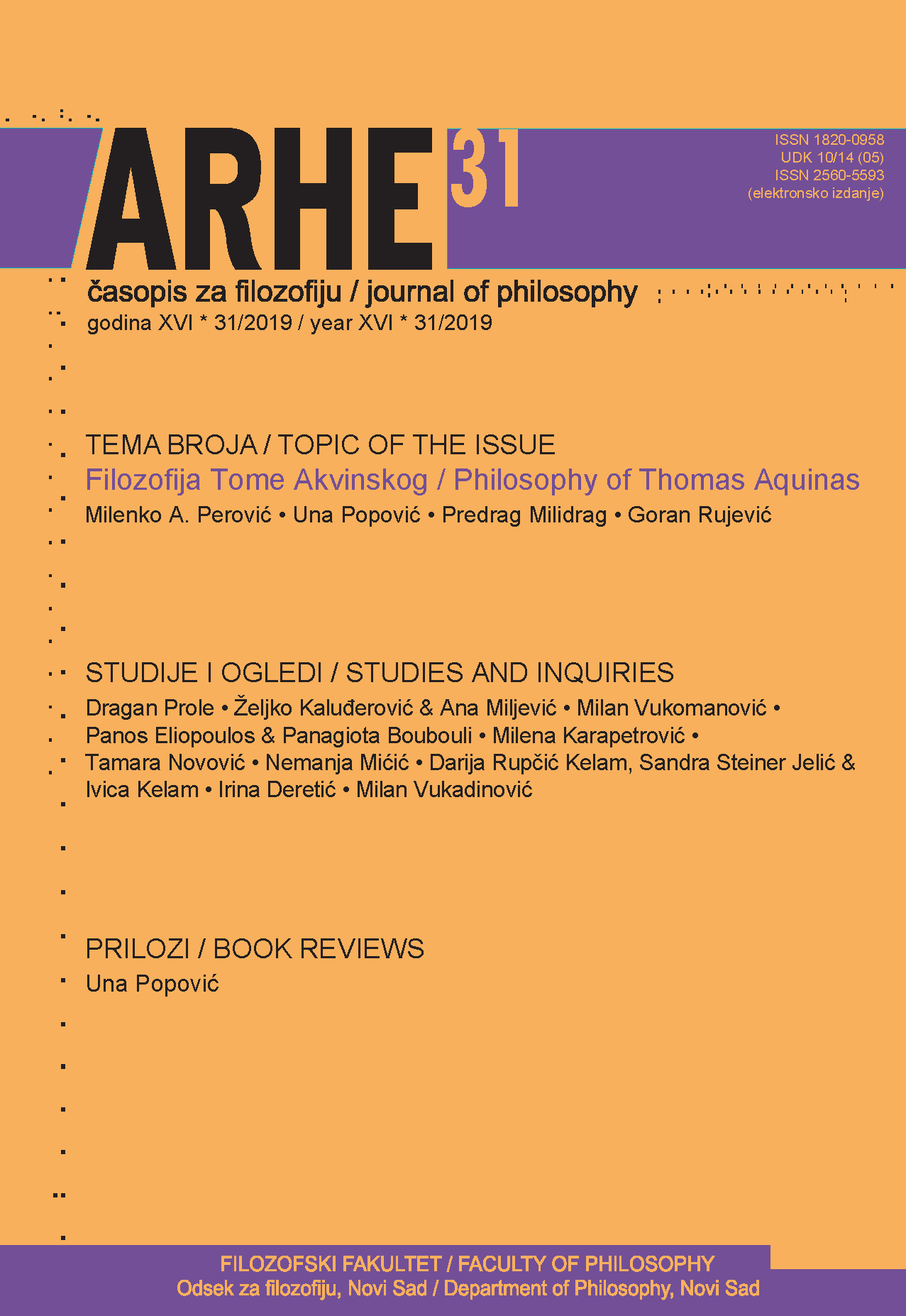THE CONSOLATION OF PHILOSOPHY: SCHOPENHAUER’S INDIA
Main Article Content
Abstract
In this text the author has analyzed the possible Hindu (Vedantic) influences on the metaphysical and ethical teachings of Arthur Schopenhauer developed in his work The World as Will and Representation. Kant’s impact on Schopenhauer is well-known and often pointed out in the history of philosophy. It is clear, however, that Schopenhauer’s doctrine of will, as well as his conception of the world as representation, were largely prompted by Vedantic philosophy, as he himself indicated by his references to this literature. On the other hand, his ethical doctrine was influenced by early Buddhism, but this aspect has only partially been emphasized in this context. The author also assesses the possible sources of Schopenhauer’s knowledge about religions and philosophies of India in the framework of the development of Indology in early 19th century Europe.
Article Details
References
Bhagavad-Gita: Pesma o božanstvu (1981), prev. Pavle Jevtić, Grafos, Beograd.
Chakrabarty, R. (2008), The Asiatic Society:1784-2008, Kolkata: The Asiatic Society.
Iveković, Rada (1977), Rana buddhistička misao, Veselin Masleša, Sarajevo.
Gaudapada (2016), Mandukya Upanishad: with Gaudapada’s Commentary, transl. by Charles Johnston, Kshetra Books, Kolkata.
Halbfass, Wilhelm (1988), India and Europe: An Essay in Understanding, SUNY Press, Albany.
Maharši, Ramana (1982), Who Am I? (Nan Yar?): The Teachings of Bhagavan Sri Ramana Maharshi, V. S. Ramanan, Tiruvannamalai, S. India.
Muller, Max F.(1979), The Vedanta Philosophy, Delhi: Nag Publishers.
Ňāṇājīvako, Bhikkhu (2008), Schopenhauer and Buddhism, Buddhist Publication Society, Kandy, Online Edition.
Oupnek' Hat: id Est, Secretum Tegendum (2011), by Anquetil-Duperron, Nabu Press.
Petronijević, Branislav (1982), Istorija novije filozofije, Nolit, Beograd.
Pušić, Radosav (1996), Sin neba: Filosofija stare Kine, Svetovi, Novi Sad.
Rollmann, Hans (1979), „Deussen, Nietzsche, and Vedānta“, Journal of the History of Ideas, Vol. 39, No. 1, str. 125-132.
Schopenhauer, Arthur (1851), Parerga und Paralipomena: kleine philosophische schriften, Zweiter Band, Berlin.
Smith, Huston (1992), “Reflections on Thought and Truth”, Essays on World Religion, ed. by M. Darrol Bryant, St Paul: Paragon House.
Sankaracharya, Sri (1973), Aparokshanubhuti or Self-Realization, Advaita Ashrama, Mayavati.
Šopenhauer, Artur (2013), Parerga i paralipomena, Dereta, Beograd.
Šopenhauer, Artur (1981), Svet kao volja i predstava, I/1, Grafos, Beograd.
The Upanishads (1979), transl. from the Sanskrit by Juan Mascaró, Penguin Books.
Veljačić, Čedomil (1979), Filozofija istočnih naroda, Matica hrvatska, Zagreb.
Vukomanović, Milan (2004), „Schopenhauer and Wittgenstein: Assessing the Buddhist Influences on their Conceptions of Ethics”, Filozofija i društvo, vol. 24, str. 163-187.
